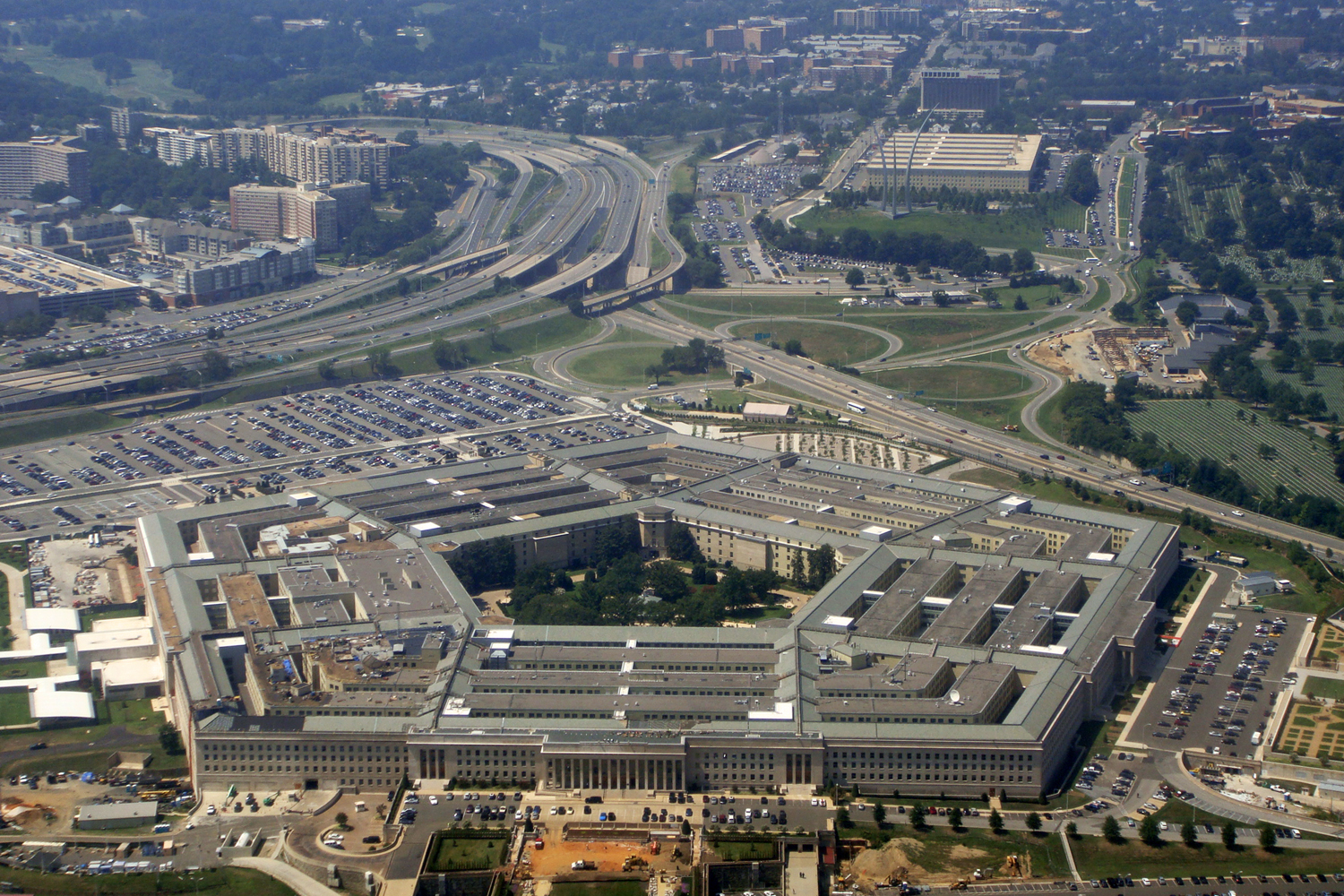The Defense Department’s Role in the New Sustainability Executive Order
Reducing emissions will be a challenge but also an operational opportunity for the Department of Defense.

Published by The Lawfare Institute
in Cooperation With

On Dec. 8, President Biden announced a new executive order, Catalyzing Clean Energy Industries and Jobs Through Federal Sustainability, which directs the federal government to achieve a carbon pollution-free electricity sector by 2035 and net-zero emissions economy-wide by no later than 2050. This is the latest in a series of ambitious climate actions taken by the Biden administration to address the growing security challenges posed by climate change. As four U.S. agencies reported in late October, climate change effects like heat waves, droughts, and flooding are reshaping the national security landscape by increasing risks of conflict over resources, forced migration, and political instability in already weak states. As President Biden stated last December, “Climate change poses an existential threat—not just to our environment, but to our health, our communities, our national security, and our economic well-being.”
The new executive order is part of the administration’s broader efforts to address these challenges by using the federal government’s procurement power to drive overall economic demand for green energy. Digging into the details of the Federal Sustainability Plan that accompanied the executive order makes it clear that one federal agency rises well above the rest in its ability to send a signal to the market through a shift to clean energy: the Department of Defense.
Achieving a carbon pollution-free electricity sector and net-zero emissions will require strong participation from the Defense Department. In 2020, the Pentagon accounted for 56 percent of total U.S. government emissions in 2020 and consumed 52 percent of the domestic electricity usage by the U.S. government. Reducing these emissions will be a challenge but also an operational opportunity for the department. Building ships, airplanes and tanks that leverage new renewable energy technologies can increase the military’s self-sufficiency and help it maintain freedom of maneuver in a warming world. As U.K. Lt. Gen. Richard Nugee (ret.) has said, being green or capable is not a zero-sum game for militaries. Instead, as he noted in a speech earlier this year, “There are many opportunities where adopting a green approach, understanding the effects of climate change and the technology being developed to adapt to and mitigate its effects, can result in a more capable force—either directly through adoption of new technologies or indirectly through opportunities to become more self-sufficient and resilient, thereby saving money that can be spent on enhancing further our operational capability.”
Given the size and scope of the Defense Department’s carbon footprint relative to other parts of the government, it will require an all-hands-on-deck approach to driving innovation, scaling up the deployment of new technologies and innovative procurement. For example, the department will need to ramp up new on-site energy generation capabilities, such as two new projects slated to come online in 2022: the nation’s largest 100 percent clean-energy microgrid at the Defense Department’s Pacific Missile Range Facility in Hawaii and one of the country’s biggest solar voltaic arrays at Edwards Air Force Base in California. The executive order directs the department to lead on new strategies for aggregating electricity purchasing across regions and agencies as well. In some places, state and local utilities will be ahead of the federal government, allowing the Defense Department to meet its renewable goals without any changes on its part. For example, Joint Base Lewis-McChord in Washington gets its power from Tacoma Public Utilities, which reports that 97 percent of its power supply is carbon free. In other places, the department will have to drive the demand for local utilities to make the shift to renewables and unlock economies of scale.
The executive order highlights demand for electric vehicles as another area for Defense Department sustainability leadership. The order requires 100 percent zero-emission light vehicle acquisitions by 2035. Outside of the postal service, the largest federal fleet is operated by the Defense Department, with approximately 180,000 nontactical vehicles. In a visit to Michigan in November, Deputy Secretary of Defense Kathleen Hicks indicated that the department is already planning for this transition and putting industry on notice that the department will need its help. While speaking at Wayne State University, Hicks noted that the department “needs partners” and is raising the “national security flag” to send a market signal to electric vehicle and battery manufacturers. In the same speech, she said that the department is exploring alternative energy sources for its tactical vehicles as well, beginning with a shift to hybrid electric technology.
The order also includes a large caveat, stating: “The head of an agency may exempt particular agency activities and related personnel, resources, and facilities from the provisions of this order when it is in the interest of national security.” Therefore, meeting the ambitious goals of the executive order will require strong leadership from Secretary of Defense Lloyd Austin and his team to ensure this carveout does not become an excuse for inaction by the department. He must take every opportunity to make the case for the operational and strategic benefits of moving to clean energy to build momentum across a large bureaucracy that can be resistant to change.
Fortunately, the case for the co-benefits of sustainability to the military mission is strong. Gaining access to fuel is currently one of the most dangerous and challenging aspects of many overseas missions. More than 3,000 U.S. soldiers were killed or wounded from 2003 to 2007 in attacks on fuel and water convoys in Afghanistan and Iraq. An EU official recently told of soldiers in the Sahel flying fuel in via helicopter because land routes were too risky—yet the helicopter itself consumed more than half the fuel it could deliver. Increasing the use of renewable energy could reduce the need for long, dangerous fuel supply lines in the field. Already, the department is funding research into portable energy sources such as fuel cells, wearable solar photovoltaic cells, and mobile microgrids that leverage renewable energy and help diesel generators operate more efficiently. Doubling down on such investments will contribute to the Biden administration’s sustainability goals, drive innovation across the renewable energy sector and keep U.S. soldiers safer.
Within the United States, expanding on-site generation of carbon pollution-free electricity at military bases and installations will increase their resilience—both to the uptick in extreme weather events expected due to climate change as well as to adversary attacks. The current reliance of most domestic military bases on the commercial grid is a significant vulnerability. The National Academies of Sciences identified the grid’s “scale, geographic reach, and complexity” as posing many challenges in maintaining reliable operations, including the risk of cyber or direct attacks by terrorists or nefarious state actors. The winter storm that knocked out power across much of Texas in January provides a perfect example of the need for more renewable energy sources for military bases. Fort Hood, near Killeen, Texas, was able to keep the lights on during that time period in part because it gets about half of its energy from solar arrays and wind power, none of which failed during the storm. However, the base bought the other half of its power from the private grid in Texas at a time when the prices were spiking due to the storm. When the bill came due, it totaled more than $30 million for the month of February alone, more than the $20 million spent in 2020 to fuel the base for the entire year. Building energy autonomy therefore is a key component of mission assurance.
Time is not on Biden’s side in implementing these sustainability goals. President Obama signed a similar executive order in 2015 aimed at curbing federal emissions by 40 percent over 10 years. After coming into office, President Trump repealed the order. It is possible a president elected in 2024 could do the same to Biden’s climate-related executive orders. One hedge against such an outcome is congressional action to codify net-zero requirements into law. The National Defense Authorization Act for Fiscal 2022 helps to do just that by including requirements that at least 10 percent of major military installations achieve net-zero energy and net-zero water or waste by 2035. Congress could also consider increasing funding for such requirements, which would decrease the likelihood that the Pentagon views taking action toward these targets as coming at the expense of other operational necessities.
Another hedge to ensure the longer-term institutionalization of climate and sustainability-focused approaches at all levels within the Defense Department and other agencies is to focus on building a climate-strong workforce. The sustainability executive order recognizes that meeting the challenges of climate change requires a “workforce with the knowledge and skills to effectively apply sustainability, climate adaptation, and environmental stewardship across disciplines and functions.” To that end, the sustainability plan points to the department as a “deep pocket … of sustainability and climate adaptation expertise” that other agencies can look to for leadership. Despite this comparative advantage over other agencies, the department recognizes the need to continue to develop and grow its workforce in this area. The Defense Department’s Climate Adaptation Plan released earlier this year noted, “The Department is committed to integrating climate change literacy into all its training and education efforts, from skill-specific military education to graduate training in the war colleges.”
Of course, cutting emissions is just one piece of the bigger climate security puzzle for the Department of Defense. The other key pieces—analysis and warning of the security risks posed by climate change and developing adaptation and resilience measures to near-term climate hazards—are equally critical and were addressed in the department’s Climate Risk Analysis and Climate Adaptation Plan released earlier this year. Adding the sustainability executive order to the mix adds up to an impressive foundation for the department to act on in 2022 and beyond.





